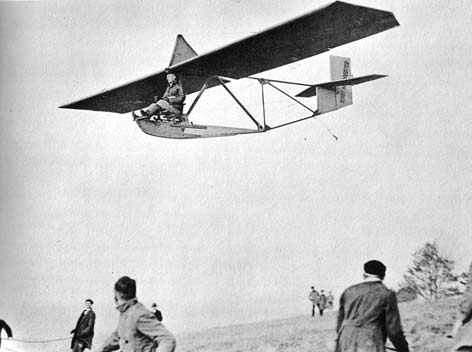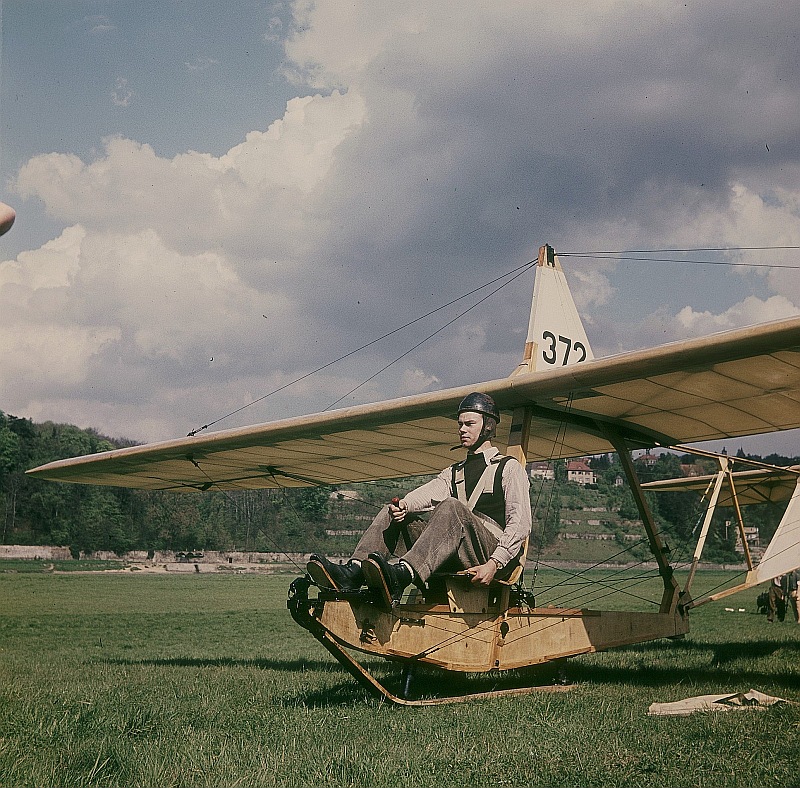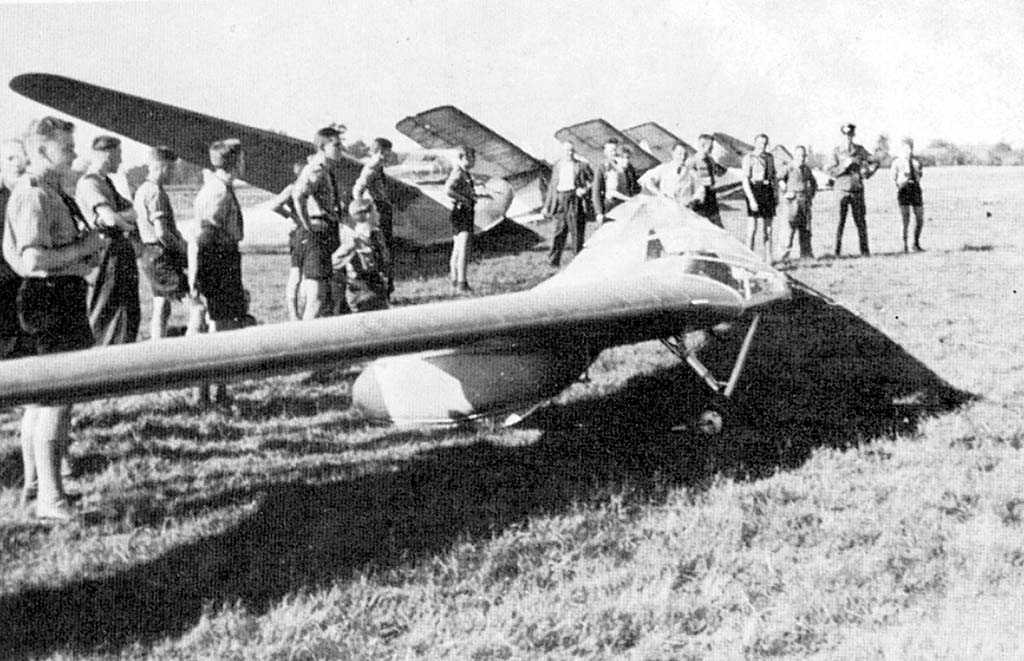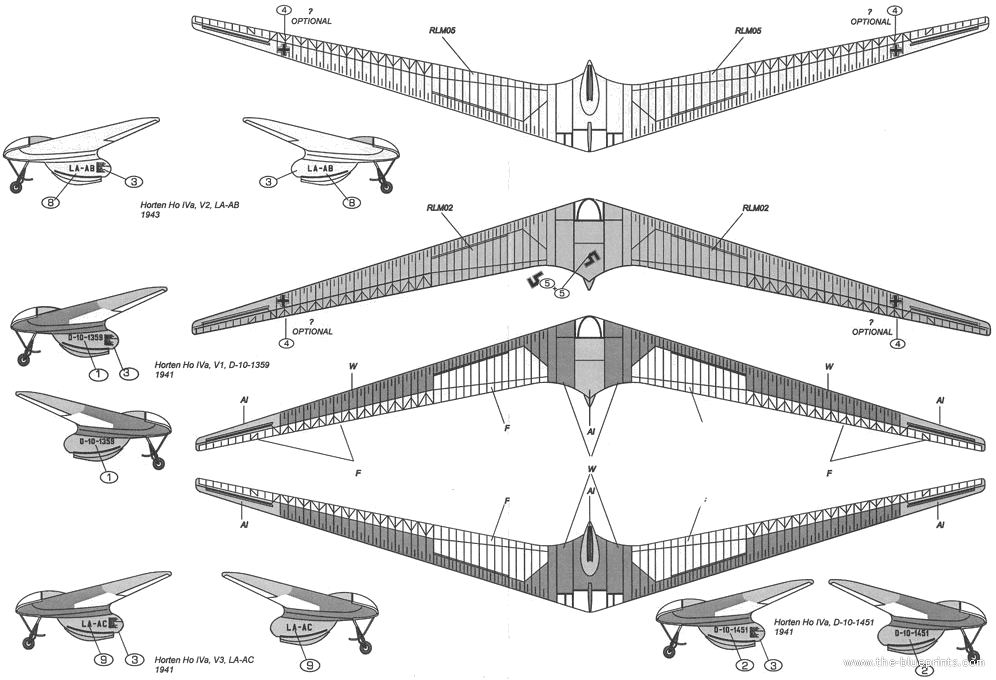How a simple, DIY-inspired design helped create the worlds most dangerous flying corps.
When World War 1 came to an end in 1918, the victorious allies took care to heavily restrict the military development of powered flight in the Treaty of Versailles. It wasn't long however, until the land of the Red Baron discovered a loophole wherein the treaty overlooked the use of unpowered flight as a military training tool. The resulting training regime used a brilliantly simple design called a Schulgleiter(English: School glider) and arguably produced the finest airmen in all of WWII (at least when evaluating individual skills alone...).
For a regime better known for engineering achievements like the ME-262 (the world's first jet fighter), than for inspired design practices as those that produced Russia's T-34 Tank or Britain's plywood Mosquito Bomber, the Schulgleiter is truly extraordinary. Officially designated the DFS-SG-38 Schulgleiter, the craft had a simple stick for steering, foot pedals for flaps and little else.
The gliders would be launched by a giant bungee chord on a mountain known as the Wasserkuppe where gentle slopes and perfect tailwinds make it the heart of German aviation to this very day. The following image shows a Schulgleiter in mid-launch position, and the 1940 vintage training video shows how the process worked.
With such ideal flight conditions, the SchulGleiter was far from the only aircraft developed at the Wasserkuppe, nor was it the only advance in unpowered flight at the time. The Horten Brothers are best known for developing the Ho-229. A jet-powered, Flying Wing with characteristics so far ahead of its time, that Northrop Grumman, designers of the B2 Stealth bomber, famously constructed a replica for the purposes of testing its stealth characteristics.
While the Ho-229 has attracted a sizable following of aircraft modelers and enthusiasts, less attention has focused on the fact that such a high-tech marvel is almost entirely derived from seemingly low-tech glider designs. Going back as far as the First World War, the Horten's had been developing the flying wing concept as a glider. Such designs might appear familiar to readers of DIYDrones, though some might warrant further research.
Of the unpowered-wings, the best known is perhaps the Horton H.IV whose extremely broad, thin wingspan was a breakthrough in tailless aircraft design.
I am highly interested to learn if other contributors to the DIYDRONES community have tested similar airfoil/wingspan designs or are aware of detailed blueprints for Horten wings or other prewar German glider designs.
Furthermore, I would like to examine where present work on DIYDrones might apply to simple manned craft like the SchulGleiter.
AFAIK the Wasserkuppe is still a popular location for Gliders and RC aircraft and currently houses the German Sailplane Museum. Please feel free to comment if you have flown at this location or are interested in the subject in general.
*This is the first post of what I hope to be a series of blog posts, tutorials and curricular guides under the hashtag #makinghistory. MH entries will examine historical antecedents to contemporary practices in the DIY, Open Source, Maker and Civic Hacking movements.








Comments
When researching and reading accounts, like the one above, I tend to branch off and look for other connections.
Jack Headley lived in Rancho Palos Verde (RPV or PV). When he and Kevin Flynn were slope soaring models, it may be that they ran into this fellow.
HERE is a bio on another slope flyer that could have run into those fellows at one time.
Look over the list of full size sailplanes for connections to the primary type.
-=Doug
Wow! Perfect!
Found it and more.
Outerzone has the Northrup version from Flying Models.. http://www.outerzone.co.uk/plan_details.asp?ID=3842
The RCM version is referred to as the Zoegling Primary Glider. December 1976.
Here is the first page with a bit of history that backs up this discussion.
In my Jack Headley research I seem to remember a 'basic' or 'primary' model like the type at the start of this post. I have looked at so many articles and models, scanning through pages of old magazine, some are beginning to blend together but, I will try to locate it.
The problem with an RC version of such a model is the lack of fuselage for storing all the stuff we use.
The profile sheet foam models and their gear installations would come the closest to how it could be done.
I completely agree that the skill set needed to keep an aircraft in the air sans engine can help once the move to a powered craft is made...to a point.
Had I stayed in the area I grew up in, my plans were to obtain a sailplane license. Where I live now, there are only a couple sailplane bases/clubs. Perhaps when I retire?
Jack Headley Research Blog
-=Doug
I don't think anybody's trying to say the Glider was the ONLY consideration, indeed the usual explanation is that the Luftwaffe had so many more opportunities to gain combat experience then any of the other nations. I don't see any reason to challenge this convention here other than to point out that about 1000 Soviet pilots also served in Spain. Of course, Stalin made sure to kill most of them for no reason whatsoever so the value was probably tempered. Then there's the fact that Japanese pilots had been fighting in China since 1931, but the IJA/IJN clearly viewed their experienced pilots as expendable. The kamikaze raids being the most obvious example...
The Glider might not have taught them how to fight, but it very well may have taught them how to stay alive. Beyond their incredible combat records, pilots like Adolph Galland are also extraordinary in that they SURVIVED THE WAR! Granted, it would be interesting to see how the numbers bears this out. I have read that the Luftwaffe fighter corps was neglected in favor of the bomber force (a fact that actually led to revolt in 1945 when Hitler insisted on using the ME-262 as a dive bomber instead of an interceptor). I wonder how much of their overall reputation is burnished by the accomplishments of an elite but nevertheless small fraction of the overall number. If that turns out to be the case then I wonder how many more of the "super ace's" learned on the Glider compared to the rank and file?
If you are to discuss the skill level of the Luftwaffe pilots, the glider is not the only consideration.
Remember they obtained combat experience with that business in Spain.
-=Doug
Fascinating coincidence that I just purchased THIS off eBay.
In case the link expires.. which they do on eBay... here is a snag from the listing.
-=Doug
I wonder if some of the techniques they're developing for the Makerplane could be used to make a DIY Schulgleiter?
Considering I'm in the midst my own flying wing project, the aerodynamics discussion is going to be majorly helpful, so I don't want to discourage anyone from adding further valuable insights on the matter.
But my mind keeps returning to how a single place like the Wasserkuppe can play such an important role in the history of aviation (and the world at large in this case...). The closest U.S equivalent that I can think of would be Kitty Hawk (actually Kill Devil Hills) N.C. After all, when the Wright Brothers traveled to N.C in 1900, they were still primarily interested in unpowered flight (ref.). Such was there interest in gliding that they returned to the same location 11 years later (and 7 years after their historic powered flight) to break the world soaring distance record in their 1911 sailplane. The record held for another decade when it was broken in Germany by the legendary Wolfgang Klemperer. While it is most likely that this flight did indeed take place on the Wasserkuppe, the only confirmation I can find is that the record-breaking flight took him "to Gersfeld and back" (the Wasserkuppe is on the outskirts of Gersfeld). The same entry explains how nearly all of Klemperer's flights in the same craft were indeed at the Wasserkuppe glider competitions, so the evidence is certainly there.
The Wright Brother's site is now home to a National Monument and a small civil airfield commemorating the first powered flight. A giant memorial and walkway dominate the hill and the length of where the first flight took place. The Wasserkuppe, which also has a museum and memorial on its grounds is nevertheless still very active as a gliding location. I wonder if the Kitty Hawk/Kill Devil Hills site's significance to the history of powered flight has supplanted the very quality that attracted the Wright's in the first place?... E.g as a perfect location for bootstrapped aeronautical experimentation? After all, wouldn't proximity of the civil airport AND National Park Service property make it illegal to fly RC/autopiloted craft? Wouldn't the same regulations apply to small ultralight craft or sailplanes? If anyone has been to these locations please do chime in with your observations...
Either way, with the DIY UAV community expanding with ever greater numbers, and with so much discussion surrounding where we can't or shouldn't fly, perhaps its time to start finding places where we know we can experiment safely as a community. I'm definitely not saying there should be segregated "droning sections' in public parks etc... which could imply that anywhere else would be off limits. The places I'm thinking of would serve in more of a community role, akin to a Makerspace, where we could go if we wanted to meet and learn from other UAViators. Be it on a casual basis like how kite fliers tend to gather at a certain section of beach, or through more organized fly-ins, competitions or Meetups. Is anybody aware of existing efforts to this end?
I should also add that wing sweep does really bad things to the stall characteristics too, further limiting the minimum speed of a swept-wing Nürflugel. Like Wayne, I have been CFD'ing my way towards a flying wing design of my own and it's been an interesting journey well trodden by those before. The leading edge slots that Wayne has employed on his Techwing, shamelessly borrowed from the Me163, are one of the most efficient ways of improving the Cl_max on a swept wing. Wing fences are also useful, but to a much lesser extent unless they are enormous. You can see these employed on the MiG17 and 19 as well as many other Russian designs.
I find it interesting that the Horten brothers didn't seem to employ any of these features in their designs, but I may be mistaken here on this point.
-
1
-
2
-
3
of 3 Next